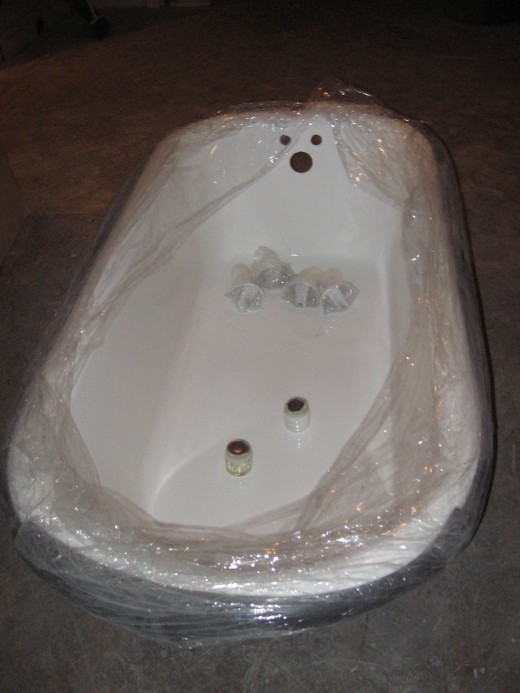How To Renovate A Townhouse In Brooklyn Volume 1 Edition 9
Are We Crazy Yet?

If you are like me and Hubbie and grew up in the 20th century, you may be familiar with an ancient human ritual known as Spring Cleaning. A tedious but necessary affair, Spring Cleaning was an annual rite in my childhood home. Spearheaded, planned and supervised by my indefatiguable mother what invariably started as the arduous but executable task of emptying and organizing our dressers, closets and cabinets, soon unraveled into a seemingly insurmountable pile of shoes and dishes, acrimony and regret.
"It always gets worse before it gets better," my mother would encourage us, never herself seeming discouraged by the piles of out-moded clothes that seemed destined to defeat us.
Funny how Mom still manages to be right so much of the time.



Three months into the renovation of our townhouse in Brooklyn, things were in a state of disarray far greater than what we had encountered when we first purchased the house. While the sticky surfaces and air fresheners were now a thing of the past, what emerged in their place is a structure filled with holes, dust and sharp objects that bears only a remote resemblance to anything that can rightly be called a house, much less a home. "Swiss cheese covered in dust," is how I liked to describe it to Hubby on days when I would visit the site without him. Meanwhile, our GC seemed undaunted by the list of unfinished items, or the piles of dust or by the numerous holes in the walls and ceilings. In fact, he seemed downright buoyed by the progress.
"Everything's moving along exactly the way it should," he commented during one winter day's walkthrough.
Gladly, the heating system still worked and the crew lacked all shyness about cranking the thermostat up to 80. They also lacked all shyness about putting holes into our walls. In fact, for a period of about four weeks it felt like making holes in the walls, or else tearing walls down completely, was pretty much all that the construction work amounted to.
This speaks directly to the fact that most of what makes a house functional is actually hidden from sight. The plumbing and electrical wiring that are the essence of a working home are generally buried in the walls, ceilings and floors and will remain forever unseen to the observing eye.
But getting that stuff into the walls, ceilings and floors of an existing house is another matter entirely. In fact, it is an indelicate process that involves punching, poking and wrecking countless holes to make room for what will ultimately be the guts and brains of our house.







Meanwhile, Hubbie and I worked on our list.
Even with all the labor and expense going into the actual house, there was still an enormous number of items to select and purchase in order to make the house function. This includes everything from toilets to countertops, from doors and knobs to kitchen sinks. In our case, Hubbie and I had borrowed the renovation funds as a part of our mortgage. We had the consultation of our architects to guide us as we made each and every decision about the fixtures, finishes, lighting, materials and appliances, but otherwise, we are on our own.
Hubbie and I had prior experience and a highly mortgaged budget to guide us as we scoured every possible retail outlet to acquire the needed goods. We found a pristine claw foot tub and drain from Long Island for an unbeatable price via Ebay, and made a repeat purchase at a retailer in Kentucky (who ships for FREE) for a second one. Ikea made it easy for our GC to pay for our reasonably priced kitchen cabinets via fax, and hours of late-night web-browsing revealed a cornucopia of goods just across the bridge in New Jersey, including marble floor tiles at a deep discount and a stone yard where we hand-picked the slab for our kitchen counters all while getting a savings on the premium rates.






Experience has shown time and again that there are bargains to be had for those who are assiduous, thrifty and willing to shop online. For me and Hubbie, doing our own legwork is always preferable to having someone do it for you especially if it means saving money in the long run. Each dollar that we save can be applied elsewhere or can just be a savings to us, which is always reassuring.
And then there's the odd renovation emergency.
Like the day when you visit the house on a Saturday morning to discover that an entire wall of 112-year old tile in the upstairs bathroom has been demolished and removed in spite of your instructions to the contrary.
If this should happen to you, refer back to Edition Number 8 and remain calm. Then call the GC and a raise holy you-know-what.


Something else my Mom taught me how to do.

Volume 1, Edition 10
- How To Renovate a Townhouse in Brooklyn Volume 1 Edition 10
When Hubbie and I first started renovating our 112-year old townhouse in Brooklyn, our General Contractor expressed his calm confidence that we would be ready to move in within three months, four months tops, he said. Well, six months after the...








